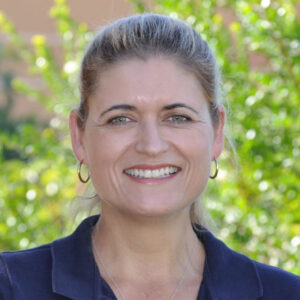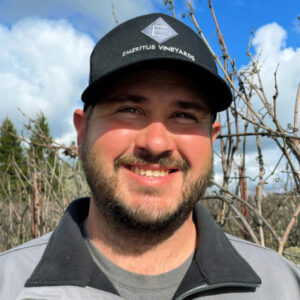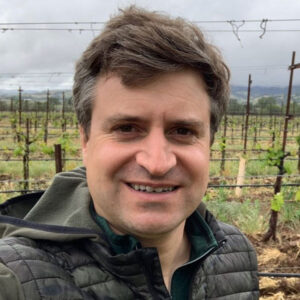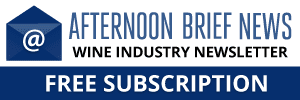Experts weigh in on preventive steps and mitigation methods for wildfire impacted vines.
By Alexandra Russell
On July 27, 2022, Wine Industry Network hosted its most recent Growing Forward webinar, this time focusing on wildfire smoke in the vineyards — and its effect on the resulting wines. It’s a hard topic to accept and address, but one that becomes integral to the industry’s forward progress.

The day began with Anita Oberholster, extension specialist in enology at UC Davis, who gave an in-depth presentation on how, exactly, wildfire smoke impacts grapes on the vine. She first defined “smoke taint,” as a “sensory term” that refers to a condition that “overpowers wine, decreases its quality and makes it one-dimensional.” Specifically, she referred to the sensation of “licking an ashtray,” a lingering retro-nasal impression that best characterizes the flaw.
Oberholster explained the science of smoke, including the many iterations of free and bound volatile phenols, and how it permeates berries on the vine, saying grapes are “like a sponge: the smoke absorbs into the skin and leaves, but not the shoots.” Which is why washing fruit after harvest won’t solve the problem and, in the case of wet ash (as a result of rinsing), may even facilitate further absorption.
Qualities of Smoke
The freshness of invading smoke matters. Highest risk is from local fires and exposure within the first 24 hours; smoke traveling from farther afield tends to result in less volatile phenols. Likewise, the grapes’ phase of development makes a difference. “Berries are most susceptible after veraison,” said Oberholster. But, contrary to the belief of some, there is no carryover: “Year to year, we start fresh,” she said. “The phenols don’t remain in the roots, stalks or the soil.”
Oberholster also outlined current testing methods and common vineyard mitigation practices. She detailed Kaolin spray and GM-3E, a polymer-based plant protection, among others, and explained the testing methodology and comparative data. Unfortunately, she said, there’s “no silver bullet. There’s no enzyme that can absorb all bound phenols. Some can strip free phenols, but they impact the wine as well.”
Even the best interventions can offer only about 30 percent protection from volatile phenols, free and bound, she continued, and even these need to be applied days in advance of smoke exposure to ensure they’ve fully dried on the fruit (damp or wet treatments can actually encourage smoke absorption). What’s more, “current commercial treatments lack specificity.”
Gathering Data
The second presentation of the day was from Adam Koeppel, cofounder and CEO of predictive agriculture platform Agrology; and Riggs Lokka, assistant vineyard manager at Emeritus Vineyards in Sebastopol, Calif. The two have been working together since 2020, when West Sonoma County was first directly impacted by wildfire.

“At the time, there wasn’t a lot of information out there about how much smoke a vineyard can take before smoke taint settles in,” says Lokka. “In early 2021, I met with the Agrology team and we came up with a plan to monitor air quality and smoke presence in our vineyards.”
A series of sensors now monitors Emeritus blocks, alerting the vineyard team in real time if air quality dips, temperatures rise or smoke invades. Using that information Lokka’s team can redeploy vineyard workers to safer areas (or call them in entirely, if necessary). “We can watch data change as the wind shifts,” Lokka says. “We can watch smoke move through the vineyard or see if it’s staying put.”
Agrology can use this data, combine it with similar data from other client vineyards, and create reports including where wildfire smoke originates from and how long it sits on a vineyard or region. One client calls the aggregated data “air-oir” (rhymes with “terroir”).
Having quantifiable information like this can lead to open conversations with grape buyers and wineries, in terms of grape quality and potential smoke exposure. “We review data together,” says Lokka, “which builds trust and helps both sides decide together what next steps should be.”
Know Your Baselines
One step grape growers can take to protect themselves from insurance battles and buyer disputes is to establish a baseline of data for each vineyard block. Knowing what’s naturally present, on an analytical level, can be a valuable tool — both for testing protocols and for quality assurance.
Oberholster recommends collecting a 300-berry representative sampling for every 40-vine block every two weeks. No need to send them out for analysis unless there’s a problem down the road: “Keep them in a freezer, well labeled. It’s a way to cover your bases.”

Standardizing data is a message echoed by both Koeppel and Lokka. “Make a plan before the smoke hits,” says Koeppel. “Check with your insurance about what information you’re going to need if you have to file a claim, then be proactive.” If you ultimately don’t need to file, that’s great — but no one wants to be scrambling in the middle of a crisis.
Koeppel further encourages data sharing for the greater good. Larger research outlets need more information to develop comparative models and design mitigations, he says: “Adding to the data library benefits us all.”
As hard as it’s been these last few years, it’s also been an opportunity. By joining forces, following the science and developing fact-based interventions, people from all aspects of the grape growing and winemaking industries are minimizing risk of catastrophic crop loss.
____________________________________________________

Alexandra Russell
Alexandra Russell is Managing Editor at Wine Industry Advisor. She can be reached at arussell@stage.wineindustryadvisor.com






